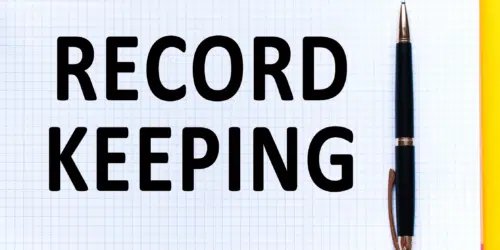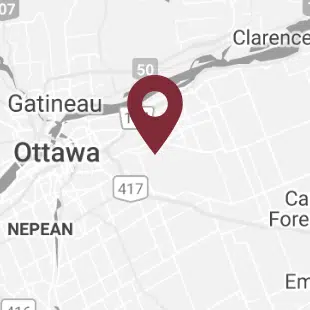On July 21st, House of Commons passed Bill C-20 which provides a substantial broadening and extension of the CEWS Program. The Program’s wage subsidy calculation scheme has also been significantly transformed.
What is it?
The Canada Emergency Wage Subsidy (CEWS) provides a wage subsidy to eligible employers, retroactive to March 15, 2020 and now ending on November 21, 2020. While there is a possibility for further extension until December 31, 2020, the Government has not released full details for that period.
The goal of the program is to prevent further job losses. The government is hoping that it will stem the tide of impending layoffs and encourage employers to re-hire workers previously laid off as a result of COVID-19. This is designed to help better position Canadian companies and other employers to more easily resume normal operations following the crisis.
Which employers qualify?
CEWS is available to businesses of any size (not just small and medium) that have been impacted by COVID-19. Previously, the Program was only open to those who have seen a drop of at least 15% of their revenue in March 2020 and 30% for the following months. The new update to the Program allows employers with any level of revenue decline to receive a subsidy that proportional to the percentage of revenue decline, starting on July 5. A further “top- up” subsidy is available to employers who have experienced a decline in revenue greater than 50%.
Employers may now also elect to compute revenue declines using an accrual accounting method as opposed to a cash method.
Under the Program, “Employers” include individuals, taxable corporations and partnerships consisting of eligible employers, non‑profit organizations, and registered charities.
Effective May 15, 2020 the Government also extended the groups that are eligible for CEWS to include the following:
Partnerships that are up to 50-per-cent owned by non-eligible members;
Indigenous government-owned corporations that are carrying on a business, as well as partnerships where the partners are Indigenous governments and eligible employers;
Registered Canadian Amateur Athletic Associations;
Registered Journalism Organizations; and
Non-public colleges and schools, including institutions that offer specialized services, such as arts schools, driving schools, language schools or flight schools.
The CEWS Program now also allows for corporations formed on the amalgamation of two or more predecessor corporations to qualify for the Program. This also includes subsidiary corporations.
In addition, CEWS now accepts applications from employers without a payroll account so long as their payroll is administered by a payroll service that does possess a valid payroll account registered with the CRA. This extension was made to address employers who use a payroll provider for employee remuneration.
How much is the subsidy?
Previously, the subsidy amount for a given employee is 75% of the first $58,700 in remuneration up to a maximum benefit of $847 per week.
Beginning on July 5, 2020, this scheme was replaced by a new sliding-scale framework that consists of two parts:
- a base percentage subsidy directly tied to the employer’s level of decline in revenue; and
- an additional “top-up” subsidy for those employers who have experienced a decline in revenue greater than 50%.
The CEWS Program now also uses reference “periods” of time to influence the amount of the subsidy. The periods, starting July 5, 2020, break down as follows:
- Period 5 – July 5, 2020 to August 1, 2020;
- Period 6 – August 2, 2020 to August 29, 2020;
- Period 7 – August 30, 2020 to September 26, 2020;
- Period 8 – September 27, 2020 to October 24, 2020; and
- Period 9 – October 25, 2020 – November 21, 2020.
The amount received by eligible employers is calculated by adding the base percentage and “top-up” percentage amounts and multiplying that number by the eligible remuneration (up to $1,129 per week).
The base percentage is determined based on the employer’s “revenue reduction percentage”, which is the amount by which the employer’s revenue has declined for that period. The base percentage is calculated using a set multiple which corresponds to the reference periods listed above. The set multiple starts at 1.2 and declines over each qualifying period. The maximum weekly base subsidy per employee ranges from $677 in Period 5 to $226 in Period 9.
The “top-up” percentage subsidy is based on the amount by which the employer’s average revenue has declined (over three months) from its average revenue in the corresponding months of 2019. The employer also has the option to use its average revenue from January and February of 2020.
The top up wage subsidy is the lesser of either 25% or the amount determined by the proposed formula of deducting 50% from the revenue reduction percentage over three months and multiplying that number by 1.25. The maximum “top-up” subsidy for employers with a revenue loss greater than 50% and a three-month average revenue decline over 70% range from $960 in Period 5 to $508 in Period 9.
What if the new wage subsidy calculation decreases the wage subsidy amount I am eligible for?
For Periods 5 and 6, the new subsidy calculation rules contain a “safe-harbour” provision whereby an employer that would have been entitled to a larger wage subsidy under the old rules can use the previous bright-line calculation to determine its wage subsidy amount.
What about employees on leave with pay?
The new subsidy calculation rules provide a distinction for employees on leave with pay. If an employee is on leave with pay between the period of August 1 and August 29, 2020, the wage subsidy for that period will be calculated using the old subsidy rules– 75% of the eligible remuneration up to a maximum benefit of $847 per week.
The wage subsidy for eligible employees who are on leave with pay between August 30 and November 21, 2020 will be based on the amount paid to that employee that week. This amount is expected to be capped by regulation that is currently unreleased.
What if the employee is a new hire?
Employers are also eligible for a subsidy of salaries and wages paid to new employees.
Must employers pay a top up to employees?
No. While employers are not required to top up their employees’ earnings to pre-crisis earnings, to the extent that it is possible to do so, the Government expects that employers will try to do so.
Can employees be paid through the Wage Subsidy program even if they are not actually performing work?
Yes. The wage subsidy is meant for all employees, whether they are working or not. When Prime Minister Trudeau announced the Wage Subsidy, he explained that the intent of the program is to help companies keep people on payroll so that workers are supported and the economy is positioned to recover. This means that employees will continue to be paid, even though their employer has had to slow down or shut down because of COVID-19.
Do employers still need to make payroll deductions?
Yes. Employers are required to continue to collect and remit employer and employee contributions to each program as usual. Eligible employers can now apply for a refund covering 100% of employer-paid contributions to Employment Insurance and the Canada Pension Plan. Employers can apply for the refund at the same time that they apply for the CEWS.
Can an employer apply for the wage subsidy for those employees who have been terminated and are being paid a retiring allowance?
No – The COVID-19 Emergency Response Act, No. 2 explicitly excludes the payment of a retiring allowance.
Ensuring compliance
In order to maintain the integrity of the program and to ensure that it helps Canadians keep their jobs, the employer is required to repay amounts paid under the CEWS if they do not meet the eligibility requirements.
Under the new updates, the minister may issue Notices of Determination regarding a wage subsidy amount. A Notice of Determination is a compliance tool that allows the Canada Revenue Agency (CRA) to determine or vary an employee’s wage subsidy amount. Applicants should therefore keep detailed records to support their CEWS applications.
What is the deadline to apply?
The deadline to apply for the CEWS program has been extended to January 31, 2021.
How to apply
Eligible employers will be able to apply for the CEWS through the Canada Revenue Agency’s My Business Account portal. Employers must keep records demonstrating their reduction in arm’s-length revenues, as well as remuneration paid to employees.
If you have any questions about CEWS or another employment-related issues, please don’t hesitate to reach out to our Employment Law team.
Employers were able to begin applying for the CEWS on April 27.
A link to the Government of Canada CEWS information page can be found here.
A link to the CEWS calculator can be found here.
This blog post was written by Colleen Hoey and Nigel McKechnie, members of the Employment team, with the assistance of Articling Student Sarah Antonious. Colleen can be reached at 613-369-0366 or at Colleen.Hoey@mannlawyers.com. Nigel can be reached at 613-369-0382 or at nigel.mckechnie@mannlawyers.com.







